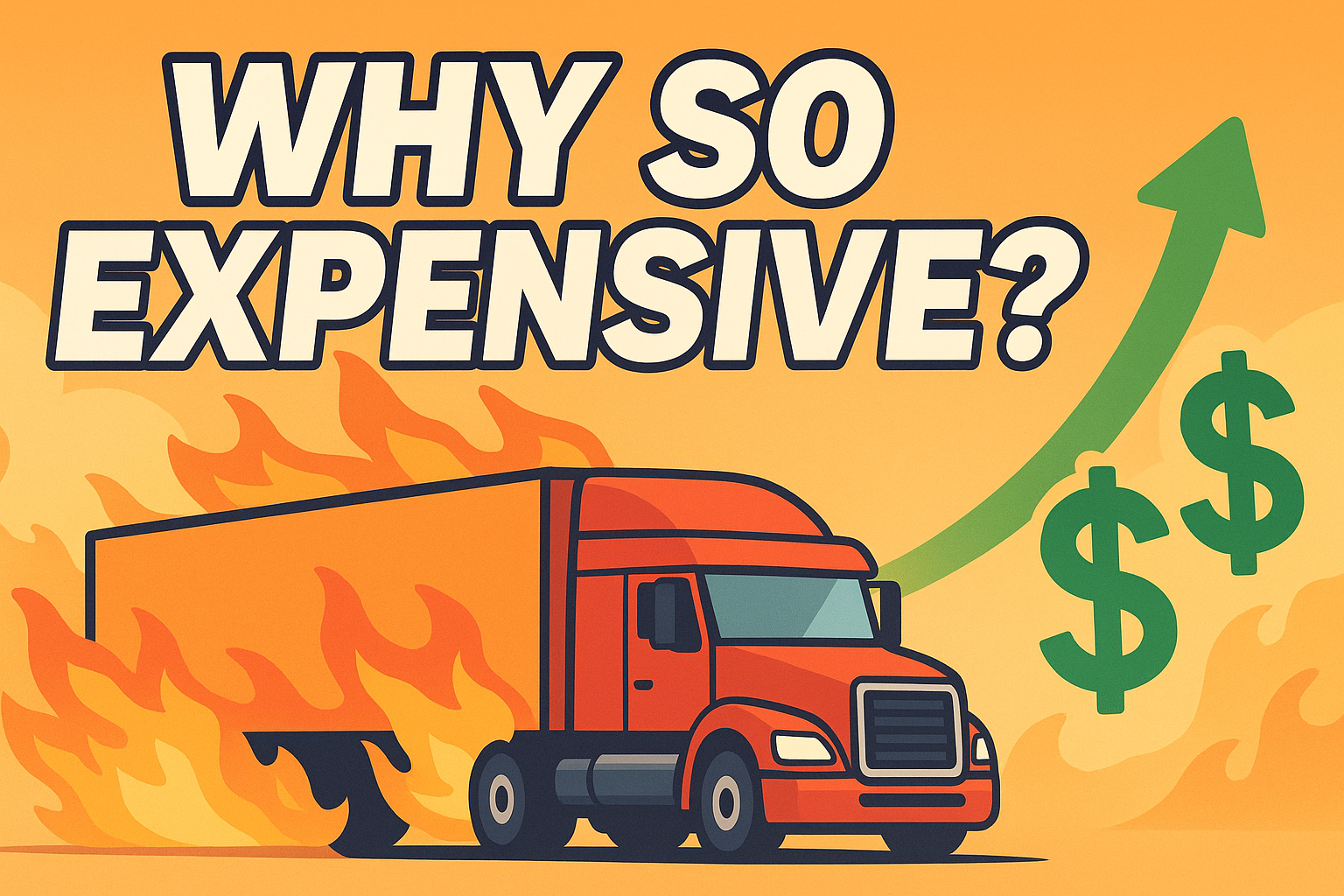Why Is Commercial Auto Insurance So Expensive? Uncover the Real Reasons
At a glance, commercial auto insurance feels like it's on a perpetual uphill drive—premium renewal notices keep climbing, and fleet operators everywhere are scrambling for answers. In reality, a perfect storm of factors is at play: soaring liability exposure, "social inflation" and mega-verdicts, ballooning repair bills for tech-laden vehicles, climate-driven weather claims, a gaping driver shortage, skyrocketing medical costs, and supply-chain logjams that make totaled vehicles even pricier to replace. Understanding each of these drivers—and adopting targeted risk-management strategies—can help your business ease off the premium accelerator and reclaim more budget for growth.
The High-Stakes World of Commercial Coverage
Commercial auto insurance isn't your everyday personal policy—it must guard fleets against multi-vehicle pileups, high-value cargo losses, and catastrophic injury claims, often with liability limits of $1 million or more per occurrence NHTSA Report AXA XL Analysis. This heavyweight coverage carries a price tag to match, since insurers need robust loss reserves to weather even a single large claim Financial Times Financial Times.
Key Cost Drivers
1. Elevated Liability Exposure
When a loaded delivery truck collides on the highway, you're not just talking dented bumpers—you could be looking at million-dollar third-party injury or property damage claims. Insurers bake higher premiums into policies to ensure they can cover those worst-case scenarios AXA XL Analysis AXA XL Analysis.
2. Social Inflation and Litigation
"Social inflation" is insurance-industry speak for runaway jury awards, plaintiff-friendly courts, and the rise of litigation funding. Casualty insurers have raised premiums for 23 consecutive quarters to brace for these sky-high payouts Financial Times Financial Times. Mega-verdicts exceeding $10 million have become distressingly common, driving overall claim severity up 72% since 2013 Insurance Journal Insurance Journal.
3. Tech-Heavy Repair Bills
Modern fleets aren't your grandfather's trucks—they come standard with ADAS (advanced driver assistance systems), telematics pods, and lightweight composites that cost thousands to recalibrate or replace. For instance, ADAS components alone can add an average of $1,541 to a minor front-end repair—over 13% of the total repair bill AAA Study AAA Study.
4. Climate-Driven Claims
Between hailstorms the size of grapefruits and flash floods worthy of an action movie, Mother Nature is on a claims-filing spree. In 2023, hail-related damages made up 12% of all auto claims, up from 9% in 2020 Yahoo Finance Yahoo Finance. Insurers adjust rates to buffer against the next big storm.
5. Driver Shortages and Experience Gaps
With an estimated shortage of up to 78,000 truck drivers by late 2024, fleets often have to recruit less-experienced operators—which correlates with higher accident frequencies and elevated loss ratios Industry Report Industry Report.
6. Medical Cost Inflation
Healthcare costs outpace almost every other sector. Since Q1 2017, physician charges per procedure have risen about 12%, while general CPI rose 7%, inflating the severity of bodily injury claims that insurers must cover Enlyte Report Enlyte Report.
7. Supply-Chain Snarls & Chip Shortages
Global semiconductor bottlenecks have snarled repair shops—longer repair times, pricier parts, and higher total-loss thresholds all translate into bigger payouts for insurers, who then pass those costs onto policyholders The Zebra The Zebra.
8. Fraud and Staged Accidents
Fraudulent claims and staged collisions remain a hidden tax on legitimate businesses. In the U.S., staged accidents cost insurers roughly $20 billion per year, adding $100–$300 to every driver's annual premiums Fox Business Fox Business.
Practical Strategies to Reclaim Control
- Telematics & Coaching: Equip vehicles with GPS-based monitoring and in-cab coaching to reward safe driving and qualify for insurer credits—savings up to 20% per vehicle are possible Geotab Research Geotab Research.
- Proactive Maintenance: A rigorous upkeep schedule reduces breakdowns and collisions, potentially unlocking premium discounts under many carrier programs.
- Smart Coverage Tweaks: Match liability limits and deductibles to real risk; a higher deductible can shave thousands annually if you can cover small repairs in-house.
- Bundle & Negotiate: Consolidate auto, liability, and property coverage with one insurer for multi-policy discounts—and leverage your loss-history data at renewal.
- Alternative Risk Financing: For top-tier safety records, explore captive insurance entities or self-insured retentions to fund losses more cost-effectively.
Final Pit Stop
There's no magic formula to make commercial auto insurance inexpensive—that $1 million liability coverage isn't going to underwrite itself. But by decoding the major cost drivers—from social inflation to ADAS sticker shock—and applying smart risk-management tactics, fleets can shift from premium panic to policy mastery. Here's to safer roads and more budget left over for what really drives your business forward!
Ready to transform your fleet operations? Start your free trial or schedule a demo to see HoneyRuns in action.
